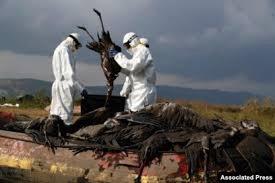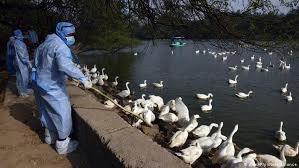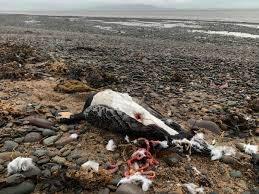 In past years migratory birds, and especially waterfowl, were involved in transmission of H5 and H7 strains of avian influenza without reports of death. In 2021, extensive mortality has occurred in diverse species suggesting changes in the dynamic between highly pathogenic strains of avian influenza and their hosts. During the winter of 2021, H5N1 was the predominant strain of avian influenza detected in 16 European nations in addition to West and Southern Africa and Asia.
In past years migratory birds, and especially waterfowl, were involved in transmission of H5 and H7 strains of avian influenza without reports of death. In 2021, extensive mortality has occurred in diverse species suggesting changes in the dynamic between highly pathogenic strains of avian influenza and their hosts. During the winter of 2021, H5N1 was the predominant strain of avian influenza detected in 16 European nations in addition to West and Southern Africa and Asia.
Wild species that have been severely affected include:
- The barnacle goose (Branta leucopsis) along the Solway Firth of Scotland. Approximately 4,000 of this species have died representing 10 percent of the Svalbard population.
- Demoiselle cranes (Grus virgo) in a wildlife reserve in Rajasthan, India.
- Bank cormorants (Phalacrocorax neglectus) - approximately 18,000 of this species have died on the Dyer Island Reserve in the western cape of the Republic of South Africa.
- The common crane (Grus grus) with as many as 8,000 dead in the Hula Valley Wildlife Reserve in Northern Israel.
Other species affected with H5N1 include white pelicans (Pelcanus erythorhynchos), widgeons (Mareca spp), and teal (Anas crecca) in Scandinavian countries including the Waddensea Region in Southwest Denmark. Reports of widespread deaths in crows (Corvus splendens) in India. Mute swans (Cygnus olor) have died in E.U. nations yielding H5N8 avian influenza.
 Extensive outbreaks of avian influenza occur among species resting in wetlands serving as intermediate resting areas along migration paths between Eurasia and Africa. In recent years, changes in agriculture and possibly global warming have influenced routes of migration. High concentration of birds in limited areas may have facilitated mutation of low-pathogenic strains of H5 and H7 avian influenza to increase in virulence, as is the case in commercial poultry.
Extensive outbreaks of avian influenza occur among species resting in wetlands serving as intermediate resting areas along migration paths between Eurasia and Africa. In recent years, changes in agriculture and possibly global warming have influenced routes of migration. High concentration of birds in limited areas may have facilitated mutation of low-pathogenic strains of H5 and H7 avian influenza to increase in virulence, as is the case in commercial poultry.
Experience since 2014 has demonstrated the need to maintain surveillance over wild bird populations to determine the serotypes of avian influenza that are present and to quantify risks of extension to commercial poultry.
 Clearly the cohabitation of migratory birds, and especially waterfowl, with non-confined ducks and chickens contributes to introduction of avian influenza into commercial poultry. This is evidenced by the December 2021 outbreak on the Avalon Peninsula of the Province of Newfoundland and Labrador where the same H5N1 virus was isolated from black-backed gulls (Larus spp) concurrently with an outbreak in an exhibition farm housing numerous species of indigenous and exotic waterfowl.
Clearly the cohabitation of migratory birds, and especially waterfowl, with non-confined ducks and chickens contributes to introduction of avian influenza into commercial poultry. This is evidenced by the December 2021 outbreak on the Avalon Peninsula of the Province of Newfoundland and Labrador where the same H5N1 virus was isolated from black-backed gulls (Larus spp) concurrently with an outbreak in an exhibition farm housing numerous species of indigenous and exotic waterfowl.
Obviously continuous surveillance of migratory birds and an appreciation of their ever changing migratory pathways is of importance to the World’s poultry industries.